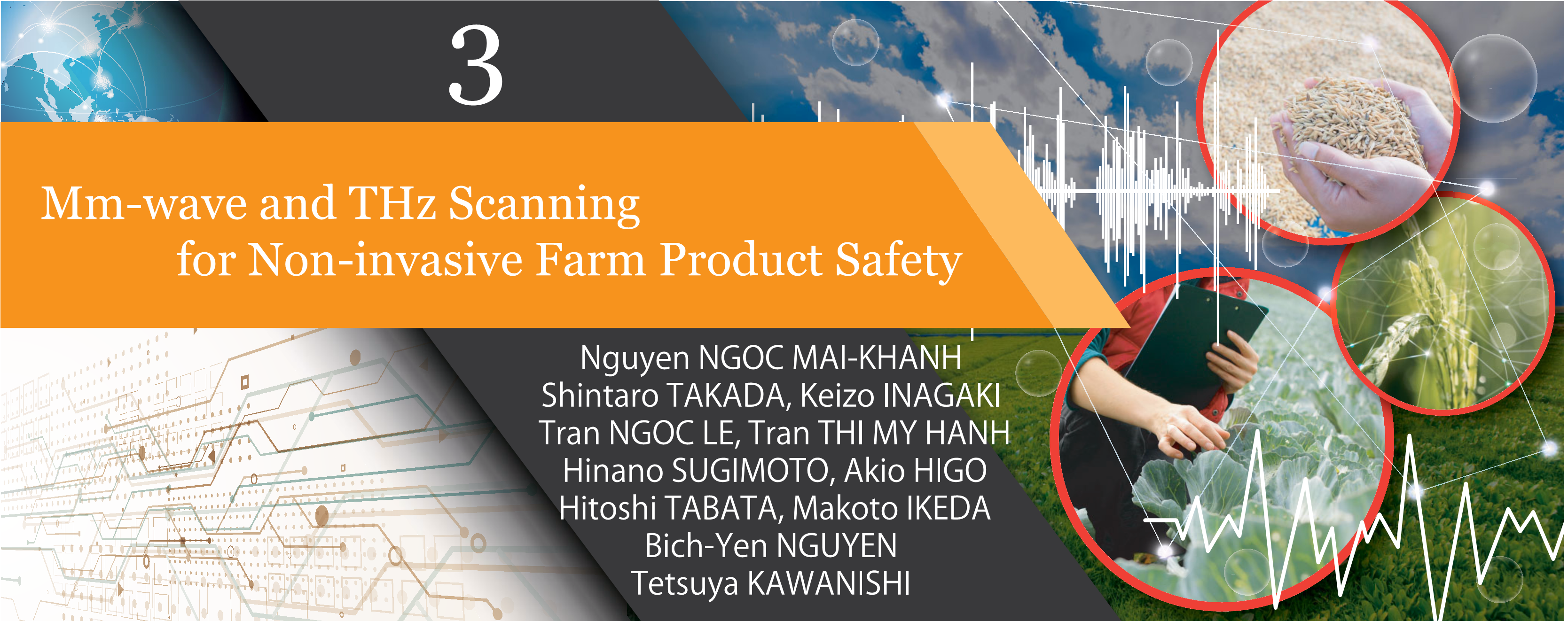
|
電子情報通信学会 - IEICE会誌 試し読みサイト
© Copyright IEICE. All rights reserved.
|

|
電子情報通信学会 - IEICE会誌 試し読みサイト
© Copyright IEICE. All rights reserved.
|

Abstract
Our project is to develop a portable and cost-effective scanner for real-time detection of foreign contaminants in agricultural staples and/or animal feed with a unique and novel mm-wave/THz sensing capability. This paper presents both qualitative and quantitative detection methods for the harmful substance melamine in a wide frequency range, from mm-wave to the THz range. Melamine has been illegally forcibly added to meals, including powdered milk or pet feed, in order to raise the protein level, one of the most crucial quality indicators. A method for quantitative detection of melamine is presented in this paper. Validation in both mm-wave and THz ranges is performed using experiments. The measurement results show that the estimation of melamine content in mixtures can be performed in several mm-wave and THz frequency bands, including 220-330GHz, 2THz, 2.26THz, and 4THz. Especially the peak around 4THz of melamine was found and to our knowledge this is the first study and THz measurement. To further evaluate the properties and response of melamine and its mixtures in the infrared spectrum and other chromatography, the quantitative determination of melamine was performed by both Fourier-transform infrared spectroscopy (FTIR) method and ultra-performance liquid chromatography (HPLC). These frequency bands of melamine property are useful for implementing a portable detection system with an integrated antenna array or THz pulse transceiver since the size of the components and the sampling resolution essentially depend on the operating frequency band or wavelength.
Keywords:Mm-wave, THz, food safety, melamine, detection, scanning, sensing, non-invasive, smart farming, integrated antenna, system-in-package
Smart agriculture enables farmers to monitor and manage their crop production using advanced technologies to increase the quantity and quality of agricultural products. The basic capabilities of smart agriculture include the control of crop water or nutrient deficiencies(1)~(3), detection and monitoring of pests and diseases(4)~(6), irrigation management(7),(8), and rainwater harvesting(9)~(11), resulting in an overall safer environment. This includes monitoring soil moisture, air temperature, and other environmental variables that can affect plant growth. By using sensors, drones, and other technologies, farmers can quickly identify anomalies in their crops and adjust accordingly. This can help ensure crops are harvested and sold in optimal condition. Smart farming also allows farmers to track their crops from the farm to the grocery store, so any potential problems can be quickly identified and addressed(12),(13).
Smart farming could also be the key to solving the food crisis. By harnessing the power of the Internet of Things (IoT) and Big Data, smart farming can help improve food safety, sustainability and quality for consumers. Advanced technologies such as artificial intelligence (AI), IoT, and mobile internet can provide realistic solutions to the challenges facing the world. As the technology continues to develop, smart farming could become an invaluable tool for farmers and consumers alike.
続きを読みたい方は、以下のリンクより電子情報通信学会の学会誌の購読もしくは学会に入会登録することで読めるようになります。 また、会員になると豊富な豪華特典が付いてきます。
電子情報通信学会 - IEICE会誌はモバイルでお読みいただけます。
電子情報通信学会 - IEICE会誌アプリをダウンロード